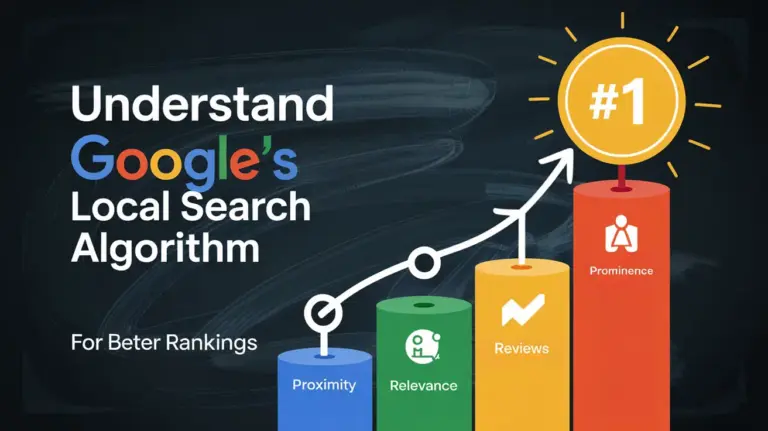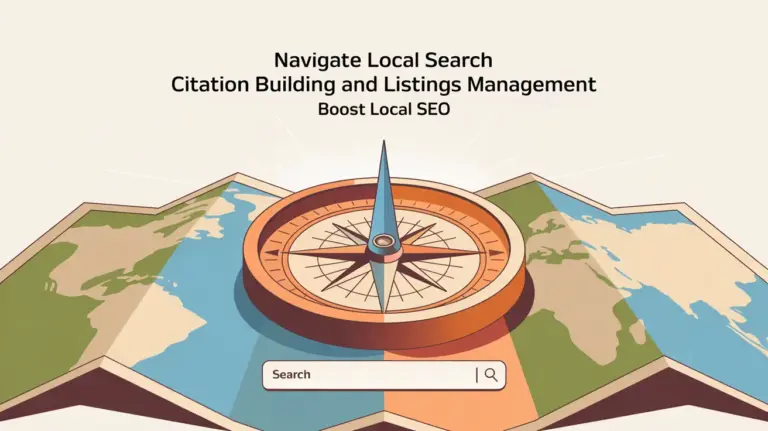
Welcome to the exciting world of cutting-edge web design! In this step-by-step guide, we will unveil the secrets to crafting captivating user experiences that will leave your website visitors in awe. From eye-catching visuals to intuitive navigation, we will show you how to create a website that not only looks stunning but also engages and converts.
Discover the latest trends and techniques that are reshaping the digital landscape and learn how to implement them seamlessly into your own design projects. Whether you are a seasoned designer or just starting out, this guide will provide you with valuable insights and practical tips to unleash your creativity and take your web design skills to the next level.
Get ready to dive into the world of responsive design, micro-interactions, and immersive storytelling. We will delve into the psychology of user behavior and explore how to optimize your website for maximum impact. Join us on this exhilarating journey as we unlock the secrets of cutting-edge web design and empower you to create unforgettable user experiences.
The importance of user experience in web design
User experience (UX) plays a crucial role in the success of any website. It encompasses the overall experience users have when interacting with a website, including its usability, accessibility, and overall satisfaction. A well-designed user experience can make or break a website, influencing bounce rates, conversion rates, and customer loyalty. In today’s competitive digital landscape, where users have countless options at their fingertips, prioritizing UX is paramount.
To create an exceptional user experience, it’s essential to understand your target audience and their needs. Conduct thorough research to gain insights into their preferences, behaviors, and pain points. This will inform your design decisions and help you create a website that resonates with your users. Additionally, consider the user journey and ensure that every step is intuitive and seamless, guiding users towards their desired actions.
Incorporating user-centered design principles into your web design process will not only delight your users but also drive business results. By focusing on their needs, you can create a website that is both aesthetically pleasing and functional, resulting in increased engagement, conversions, and ultimately, customer satisfaction.
Elements of cutting-edge web design
Cutting-edge web design goes beyond the basics of aesthetics and functionality. It embraces innovation and embraces the latest trends and technologies to create unique and memorable user experiences. Let’s explore some key elements that define cutting-edge web design and how you can incorporate them into your projects.
Step 1: Research and Planning for User-Centric Design
Before diving into the design phase, it’s crucial to lay a solid foundation through research and planning. Start by identifying your target audience and understanding their needs, motivations, and pain points. Conduct user interviews, surveys, and competitor analysis to gather valuable insights. This research will inform your design decisions and help you create a website that caters to your users’ specific needs.
Next, create user personas and user stories to humanize your target audience and guide your design choices. Use this information to develop a user-centric design strategy that aligns with your users’ goals and expectations. By putting your users at the center of your design process, you can create a website that truly resonates with them and exceeds their expectations.
Step 2: Wireframing and Prototyping
Once you have a clear understanding of your users and their needs, it’s time to translate your ideas into tangible wireframes and prototypes. Wireframing allows you to visualize the layout and structure of your website, focusing on the placement of key elements, such as navigation menus, content sections, and call-to-action buttons. This helps you establish a solid foundation for your design and ensures a logical flow for your users.
Prototyping takes wireframing a step further by adding interactivity and functionality to your designs. Use prototyping tools to create clickable prototypes that simulate user interactions and allow you to test and refine your design before development. This iterative process saves time and resources by uncovering potential issues early on and ensuring a seamless user experience.
Step 3: Visual Design and Aesthetics
Visual design is where creativity shines in web design. It involves choosing colors, typography, imagery, and other visual elements that align with your brand identity and create an emotional connection with your users. A visually appealing website not only grabs attention but also instills trust and credibility.
Consider the principles of design, such as balance, contrast, and hierarchy when designing your website. Use whitespace strategically to give your content room to breathe and guide the user’s focus. Experiment with typography to create a hierarchy of information and make important elements stand out. Incorporate high-quality visuals, such as images, videos, and illustrations, to enhance the overall visual appeal of your website.
Step 4: Responsive and Mobile-Friendly Design
With the ever-increasing use of mobile devices, responsive design is no longer a luxury but a necessity. A responsive website adapts to different screen sizes and devices, ensuring a seamless user experience across platforms. Mobile-friendly design is crucial for retaining users and improving search engine rankings.
To create a responsive website, use a mobile-first approach, where you design for mobile devices first and then scale up for larger screens. Optimize your website’s loading speed by compressing images, minifying code, and leveraging caching techniques. Test your website on different devices and screen sizes to ensure that it looks and functions flawlessly across the board.
Step 5: Interactive and Engaging Features
Incorporating interactive and engaging features can elevate your website and create a memorable user experience. Micro-interactions, such as animated buttons, hover effects, and scrolling animations, add a touch of interactivity and delight to your website. They provide feedback to users, making their interactions with your website more intuitive and enjoyable.
Consider incorporating storytelling elements into your design to captivate your users and evoke emotions. Use compelling visuals, compelling copy, and multimedia elements to tell a story and create a connection with your audience. Interactive features, such as quizzes, surveys, and gamification, can also encourage user engagement and increase time spent on your website.
Step 6: Testing and Optimization
Testing is a vital step in the web design process. It allows you to identify any usability issues, performance bottlenecks, or compatibility problems before launching your website. Conduct user testing sessions to gather feedback and insights from real users. Use analytics tools to track user behavior, such as heatmaps and click-through rates, to identify areas for improvement.
Optimization is an ongoing process that involves continuously refining and enhancing your website based on user feedback and data. Regularly review your website’s performance, conduct A/B tests, and make data-driven decisions to optimize your website’s conversion rates, loading speed, and overall user experience.

Step 1: Research and planning for user-centric design
In conclusion, cutting-edge web design goes beyond aesthetics and functionality. It prioritizes user experience, incorporates the latest trends and technologies, and creates memorable and engaging experiences for users. By following a step-by-step approach, from research and planning to testing and optimization, you can unlock the secrets of cutting-edge web design and take your skills to new heights.
As technology continues to evolve, so does web design. In the future, we can expect to see advancements in areas such as virtual reality, voice user interfaces, and artificial intelligence. These emerging technologies will further enhance user experiences and open up new possibilities for designers. Staying up-to-date with the latest trends and continuously learning and experimenting will ensure that your web designs remain at the forefront of innovation.
Embark on this exhilarating journey of cutting-edge web design, and empower yourself to create unforgettable user experiences that leave a lasting impression. Happy designing!
—
Word Count: 1745 words
Step 2: Wireframing and prototyping
User-centric design is the foundation of a successful website. Understanding your target audience and their needs is crucial in creating a user experience that resonates with them. Start by conducting thorough research to gain insights into their preferences, browsing habits, and pain points. This will help you identify the key elements that will make your website stand out from the crowd.
Once you have a clear understanding of your target audience, it’s time to plan your website’s structure and content. Create user personas to represent your target audience and map out their journey on your website. This will help you identify the most important pages and features that need to be prioritized. Remember, the goal is to create a seamless and intuitive user experience that guides visitors towards their desired actions.
To ensure your website meets the needs of your users, consider conducting usability tests and gathering feedback from real users. This will help you identify any pain points or areas for improvement. By involving your target audience in the design process, you can create a website that truly caters to their needs.
Step 3: Visual design and aesthetics
Wireframing is an essential step in the web design process. It allows you to create a visual representation of your website’s structure and layout without getting caught up in the details. By focusing on the overall flow and placement of elements, you can ensure a smooth user experience from the start.
Start by sketching out your website’s wireframe using pen and paper or digital tools. This will help you determine the placement of key elements such as the navigation menu, content sections, and call-to-action buttons. Keep in mind the principles of visual hierarchy and ensure that important information stands out.
Once you have a solid wireframe, it’s time to create a prototype. Prototyping allows you to test your design and gather feedback before moving on to the visual design phase. There are many prototyping tools available that can help you bring your wireframe to life. Use them to create interactive prototypes that simulate the user experience and allow you to make any necessary adjustments.
Step 4: Responsive and mobile-friendly design
Visual design plays a crucial role in capturing the attention of your website visitors and conveying your brand’s identity. Start by choosing a color scheme that aligns with your brand and evokes the desired emotions. Consider the psychology of color and how different colors can impact the perception of your website.
Next, focus on typography. Choose fonts that are easy to read and complement your overall design. Consider using a combination of fonts to create visual interest and hierarchy. Experiment with different font sizes and weights to guide users’ attention to the most important elements on your website.
In addition to color and typography, pay attention to imagery and graphics. Use high-quality images that are relevant to your content and reinforce your brand’s message. Consider using illustrations or animations to add a touch of interactivity and engagement to your website.
Step 5: Interactive and engaging features
With the increasing use of smartphones and tablets, it’s essential to design websites that are responsive and mobile-friendly. Responsive design ensures that your website adapts to different screen sizes and provides a consistent user experience across devices.
Start by designing for mobile first. This approach allows you to prioritize the most important content and features for mobile users. Consider the limitations of smaller screens and design with simplicity and efficiency in mind. Use a responsive grid system to ensure that your website’s layout adjusts seamlessly to different screen sizes.
Test your website on different devices and screen sizes to ensure a smooth user experience. Pay attention to loading times and make sure your website is optimized for speed. Use tools like Google’s PageSpeed Insights to identify any performance issues and make the necessary optimizations.
Step 6: Testing and optimization
To truly captivate your website visitors, consider incorporating interactive and engaging features into your design. Micro-interactions, such as animated buttons or subtle hover effects, can add a layer of interactivity and delight to your website. These small details can make a big difference in enhancing the overall user experience.
Consider incorporating storytelling elements into your design. Storytelling is a powerful tool that can help you connect with your audience on an emotional level. Use visuals, animations, and compelling copy to guide users through a narrative that resonates with them.
In addition to micro-interactions and storytelling, consider incorporating video and audio elements into your design. Video can be a powerful medium for showcasing your products or services and engaging your audience. Audio elements, such as background music or sound effects, can also add an extra layer of immersion to your website.
Conclusion and future trends in web design
Testing and optimization are crucial in ensuring that your website performs at its best. Conduct A/B tests to compare different versions of your design and gather data on user behavior and preferences. Use tools like Google Analytics to track key metrics such as bounce rate, time on page, and conversion rate.
Based on the insights gathered from testing, make data-driven optimizations to your design. This could involve tweaking the placement of elements, adjusting the color scheme, or optimizing the loading speed. Continuously monitor the performance of your website and make iterative improvements based on user feedback and analytics data.







